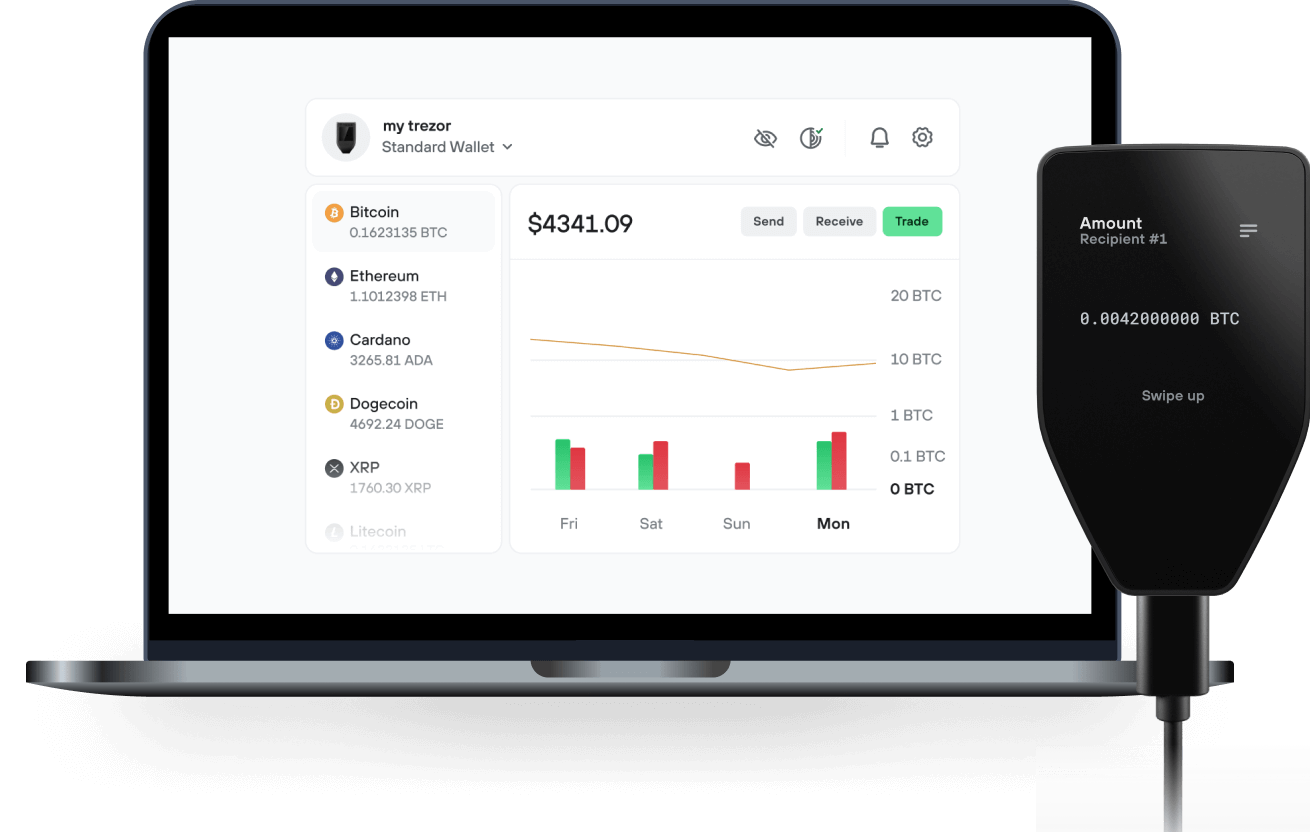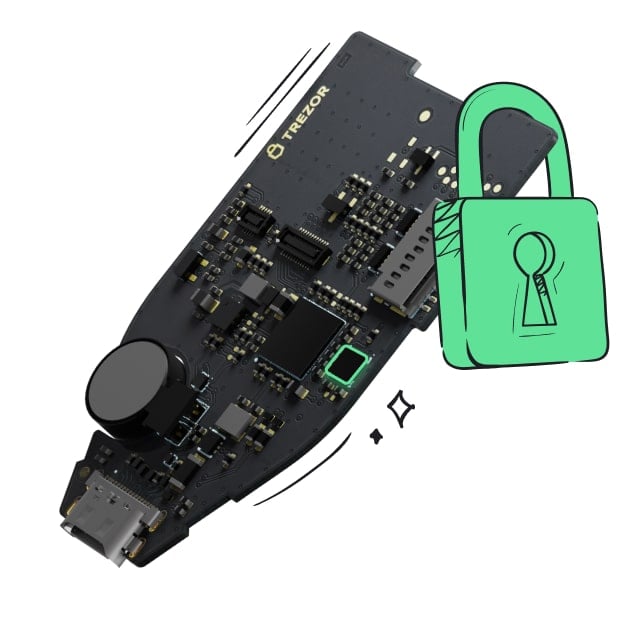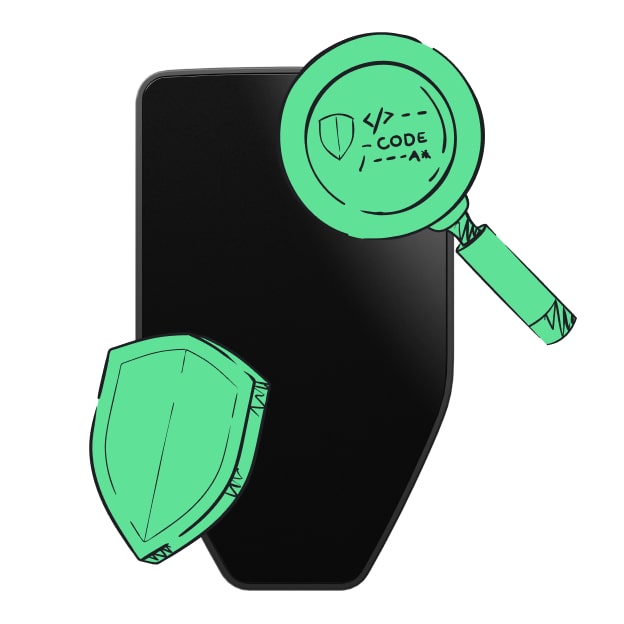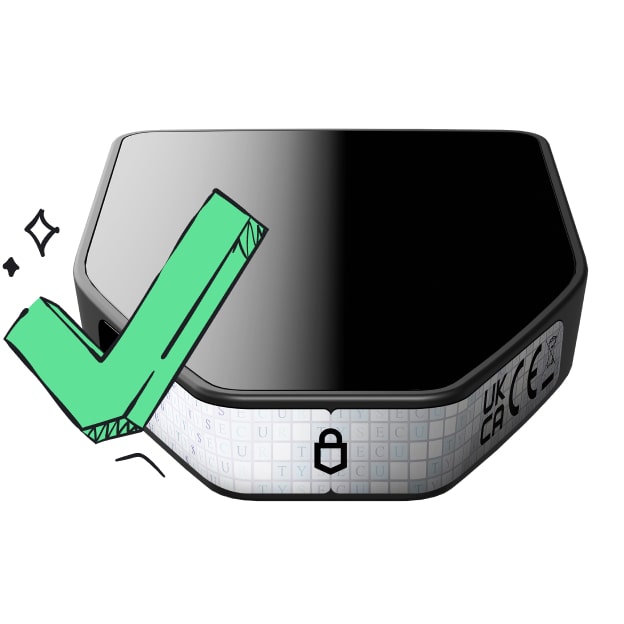Safe & secure Quantum Network wallet
Take control of your Quantum Network assets with complete confidence in the Trezor ecosystem.
- Secured by your hardware wallet
- Use with compatible hot wallets
- Trusted by over 2 million customers

Send & receive your Quantum Network with the Trezor Suite app

Send & receive
Trezor hardware wallets that support Quantum Network
Sync your Trezor with wallet apps
Manage your Quantum Network with your Trezor hardware wallet synced with several wallet apps.
Trezor Suite
MetaMask
Rabby
Supported Quantum Network Network
- Ethereum
Why a hardware wallet?
Go offline with Trezor
- You own 100% of your coins
- Your wallet is 100% safe offline
- Your data is 100% anonymous
- Your coins aren’t tied to any company
Online exchanges
- If an exchange fails, you lose your coins
- Exchanges are targets for hackers
- Your personal data may be exposed
- You don’t truly own your coins
How to QSWAP on Trezor
Connect your Trezor
Open a third-party wallet app
Manage your assets
Make the most of your QSWAP
Trezor keeps your QSWAP secure
 Protected by Secure Element
Protected by Secure ElementThe best defense against both online and offline threats
 Your tokens, your control
Your tokens, your controlAbsolute control of every transaction with on-device confirmation
 Security starts with open-source
Security starts with open-sourceTransparent wallet design makes your Trezor better and safer
 Clear & simple wallet backup
Clear & simple wallet backupRecover access to your digital assets with a new backup standard
 Confidence from day one
Confidence from day onePackaging & device security seals protect your Trezor’s integrity
What is the project about?
Quantum Network is a blockchain platform designed to enhance the scalability, efficiency, and interoperability of digital transactions across multiple blockchain ecosystems. At its core, Quantum Network aims to address some of the fundamental challenges facing the blockchain industry today, including high transaction fees, slow transaction speeds, and the complexities of interacting across different blockchain platforms.
What makes your project unique?
- AI-Driven Transaction Cost Optimization Quantum Network uses artificial intelligence to dynamically adjust transaction costs. This AI system analyzes network congestion and user behavior patterns to optimize fees in real-time. By leveraging AI, Quantum ensures that transaction costs are kept at a minimum while maintaining fast processing times, which is crucial for user satisfaction and network scalability.
- Solana Integration for Cross-Chain Swaps Quantum Network includes integration with Solana, one of the fastest blockchains, known for its high throughput and low transaction costs. This integration allows users of Quantum Network to perform cross-chain swaps using Solana’s blockchain, which significantly enhances the speed and reduces the cost of transactions, especially for users looking to interact with decentralized applications (dApps) and services outside the Ethereum ecosystem.
- Layer 2 Solutions Quantum Network implements advanced Layer 2 solutions to address the common scalability issues associated with many blockchains. By processing transactions off the main chain (Layer 1), Quantum Network ensures faster transaction speeds and lower fees, significantly improving throughput without compromising on security.
History of your project.
Fairly new launch, has only been out 104 days, and has amassed over $100k volume on both DEX and CEX
What’s next for your project?
Layer 2 Blockchain testnet release (under development)
What can your token be used for?
- Transaction Fees Tokens can be used to pay for transaction fees on the network. This includes fees for token swaps, smart contract executions, and other on-chain activities. Using the native token for fee payments incentivizes holding and using the token, as it is often required to interact with the platform.
- Governance Token holders can participate in the governance of the network, which includes voting on proposals for upgrades or changes to the system. This democratic approach allows token holders to influence the direction of the network's development, policy changes, and feature implementations.
- Staking Tokens can be staked by users to participate in the network's security and consensus mechanisms. Staking typically involves locking up a certain amount of tokens to support network operations, such as validating transactions or creating new blocks if the network uses a Proof of Stake (PoS) or similar consensus model. Stakers often receive rewards in the form of additional tokens.
- Liquidity Provision Tokens can be used to provide liquidity in decentralized exchanges (DEXs) or liquidity pools within the Quantum Network ecosystem. Liquidity providers often benefit from earning a portion of the transaction fees generated from the trading activity involving their provided liquidity.
- Incentive Mechanisms Tokens can be used to incentivize various behaviors within the ecosystem, such as rewarding users for adding content, participating in certain network activities, or promoting the network. These incentives help build a more active and engaged community.
- Reward Distribution In the context of Quantum Network's usage fees structure, tokens might be redistributed to holders as part of a reward system, where holders receive a percentage of the transaction fees or other earnings generated by the platform. This can include buyback and burn mechanisms to reduce supply and potentially increase token value, or direct distributions that reward long-term holders and users.
- Access to Services Tokens might grant holders access to premium features or services within the Quantum Network ecosystem, such as advanced trading capabilities, early access to new tools, or enhanced data services.
- Interoperability and Cross-Chain Functionality In a network designed for cross-chain interoperability, the native token can play a crucial role in facilitating and simplifying transactions across different blockchains, acting as a bridge or intermediary for value transfer.